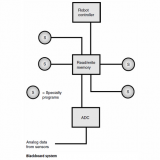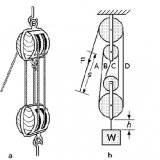METRIC PATH PLANNING – 21088
Metric path planning is a scheme of robotic navigation in which the machine attempts to find the optimum path between two points. This generally requires a computer map of the environment, containing all possible (or probable) routes the robot might take from the starting point to the goal.
A common example of metric path planning is the choice of a route along a highway system between two towns. Suppose a traveler intends to take a trip from town X to town Y. These are the initial node and the goal node, respectively. A map is required, showing all the highways and roads between the two towns that constitute possible or reasonable routes. This map constitutes the representation. The more detail the map shows, the better. The map should be as up to date as possible, and should include such information as whether a road is two-lane or four-lane, zones where road maintenance is being carried out, the irregularity of the terrain, and the general traffic density likely to be found on each section of road. Using this information, the traveler plans the trip; this planning process constitutes an algorithm. Stop-overs might be planned, depending on the length of the trip; these are intermediate nodes or waypoints.
A robot can plan its route in exactly the same way as a traveler going from town X to town Y. Ideally, the machine will choose one, and only one, optimal path between its starting point and its goal. This optimal path might be the one that takes the least time; alternatively, it might be the one that requires the least expenditure of energy. The most time-efficient path might coincide with the most energy-efficient one, but this is not always the case.



